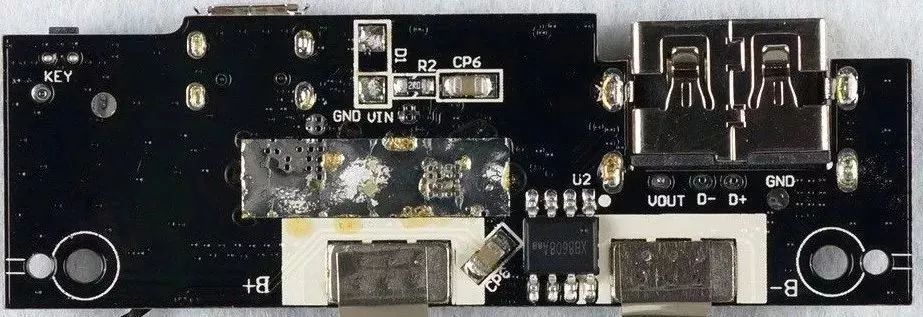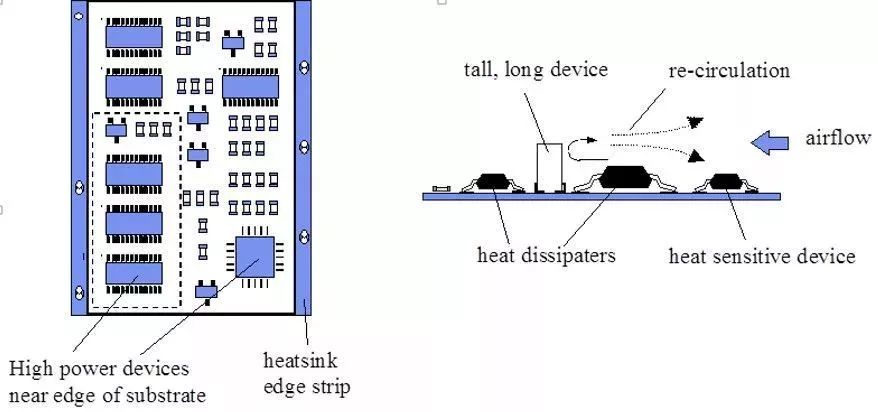How to Get Better PCB Thermal Performance
For electronic equipment, work will produce heat, which will result in the internal temperature of the equipment rapidly rising. If the heat can’t be released in time, the equipment will continue to heat up, the device will be overheating and can’t work normally, then apparently the reliability of electronic equipment will decline.
Therefore, it is very important to conduct a good heat dissipation treatment on the circuit board. The heat dissipation of PCB is a very important aspect, below we’ll discuss the heat dissipation skills in PCB design.
1. At present, the widely used PCB material is copper clad/epoxy glass-cloth material or phenolic resin glass-cloth material, and a small amount of XPC is used.
Although these materials have excellent electrical properties and processing properties, they have poor heat dissipation performance. The heat dissipation can hardly be expected from PCB resin itself, it’s most from the surface of components to the surrounding air.
However, as electronic products have entered the era of component miniaturization, high-density installation and high-thermal assembly, it is not enough to dissipate heat only from the surface of component with a very small surface area.
At the same time, due to the wide use of QFP, BGA and other SMT components, the large amount heat generated by the components is transferred to the PCB. Therefore, the best way to solve the heat dissipation is to directly improve the heat dissipation capacity of the PCB contact with the heating components, and then conduct or emit the heat from the PCB.
1) Apply heat dissipation copper foil
2) Thermal vias
3) Expose the copper on the back of IC, reduce the thermal resistance between copper plane and air
4) PCB layout
a. Arrange the heat sensitive device in the cold air area.
b. Arrange temperature detection device in the hottest location.
c. Components on a PCB, should be placed according to the calorific value and heat dissipation degree if possible. The component with low calorific value or poor heat resistance(such as small signal transistors, small-scale integrated circuits, electrolytic capacitors, etc) should be arranged on the entrance/highest area of cooling air flow. The component with high calorific value or great heat resistance(Such as power transistors, large scale integrated circuits and so on) should be arrange on the lowest area of cooling air flow.
d. In the horizontal direction, the high-power components should be arranged as close to the edge of the PCB as possible, it will help to shorten the heat transfer path. In the vertical direction, the high-power devices should be placed as close to the top of the PCB as possible to reduce the impact of these devices on the temperature of other devices while working.
e. The heat dissipation of the PCB in the equipment mainly depends on the air flow, so the air flow path should be studied when design PCB, the device and PCB should be reasonably configured. Air flow always tends to flow to places with small resistance, so when configure devices on PCB, it is necessary to avoid leaving a large airspace in a certain area. Should also pay attention to the same problem when arrange several PCBs in the machine.
f. Temperature-sensitive devices are best placed in the lowest temperature area (such as the bottom of the equipment), do not put it directly above the heating device, multiple devices are best placed in the horizontal plane’s different areas, stagger layout.
g. The devices with the highest power consumption and maximum heat dissipation should be arranged near the optimal location for heat dissipation. Do not place highly heated devices at the corners and edges of the PCB, unless there is a radiator located near it. When designing the power resistor, the device should be selected as large as possible, and the layout of the PCB should be adjusted to make it have enough heat dissipation space.
h. Suggestion of component clearance.
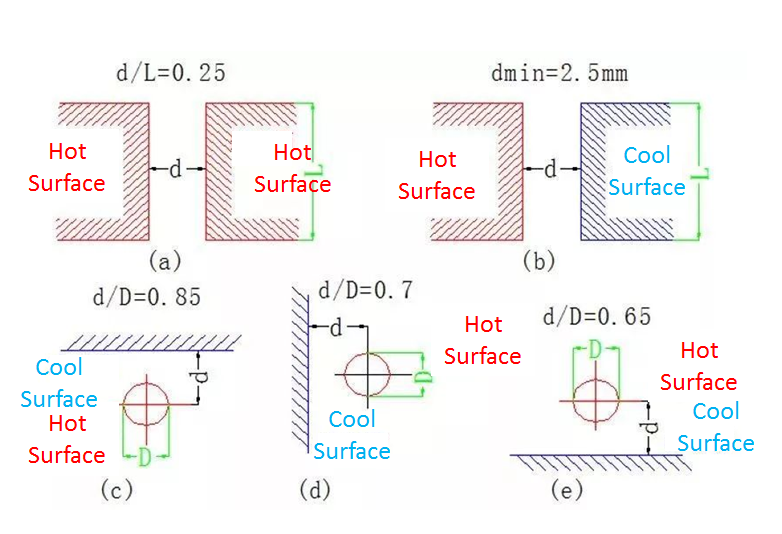
2. High heating device plus radiator, thermal conductive plate. When there are a few components(less than 3) in the PCB producing a lot of heat, you can add a radiator or heat conduction tube on the heating device, when the temperature can not fall down, you can use the radiator with fan, to enhance the heat dissipation effect.
When the amount of heating devices is more (more than 3), a large heat sink (plate) can be used. It can be a special radiator customized according to the position and height of the heating devices on the PCB, or a large flat radiator to cut out the position of different components.
The heat-sink is buckled on the component surface as a whole and dissipates heat by contact with each component. However, due to the poor height consistency during the assembly and welding of components, the heat dissipation effect is not good. Usually, soft thermal phase change heat conduction pads are added to the surface of the components to improve the heat dissipation effect.
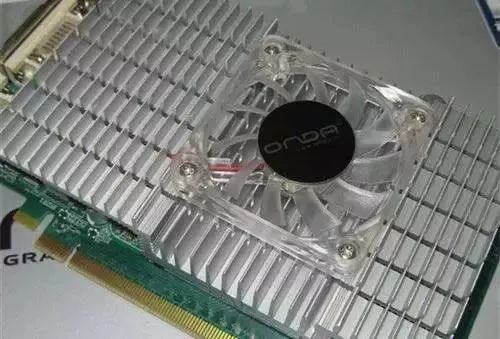
3. For equipment using free convection air cooling, it is best to arrange the integrated circuits (or other devices) in a longitudinal or transverse manner.
4. Using reasonable circuit design to achieve better heat dissipation, because the poor thermal conductivity of the resin in the plate, and copper foil lines and holes are good conductors of heat, improve the residual rate of copper foil and increase the heat conduction hole is the main means to get better thermal performance.
To evaluate the heat dissipation ability of PCB, it is necessary to calculate the equivalent thermal conductivity of insulation material for PCB, a composite material composed of various materials with different thermal conductivity.
5. The components on the same PCB should be arranged according to their calorific value and the degree of heat dissipation. The components with low heat or poor heat resistance (such as small signal transistors, small-scale integrated circuits, electrolytic capacitors, etc.) should be placed at the top of the cooling air flow (entrance). The components with high heat or good heat resistance (such as power transistors, large scale integrated circuits, etc.) should be placed in the most downstream of the cooling flow.
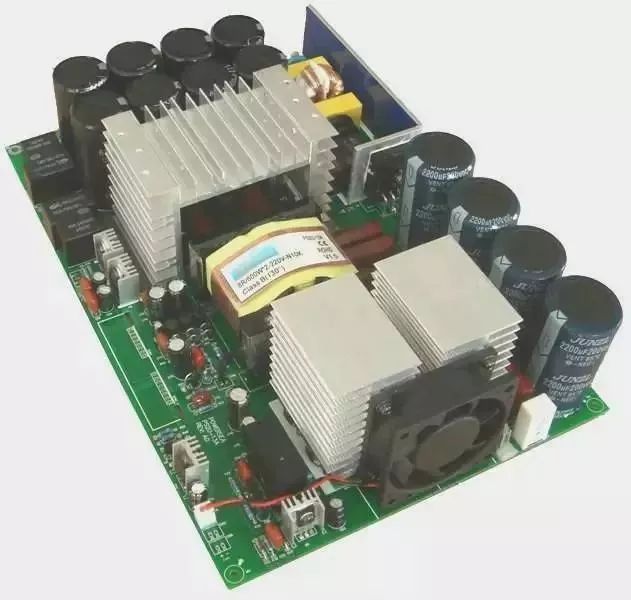
6. To avoid the concentration of hot spots on the PCB, and let the power distribute evenly on the PCB as far as possible to keep the uniform and consistent surface temperature performance of the PCB.
It is often difficult to achieve strict uniform distribution in the design process, but the region with too high power density must be avoided, so as not to have hot spots affecting the normal operation of the whole circuit.
If have good conditions, it would be necessary to analyze the thermal efficiency of printed circuits. For example, the thermal efficiency index analysis software module added to some professional PCB design software can help designers optimize the circuit design.
Please login and click here to download the PDF file:



